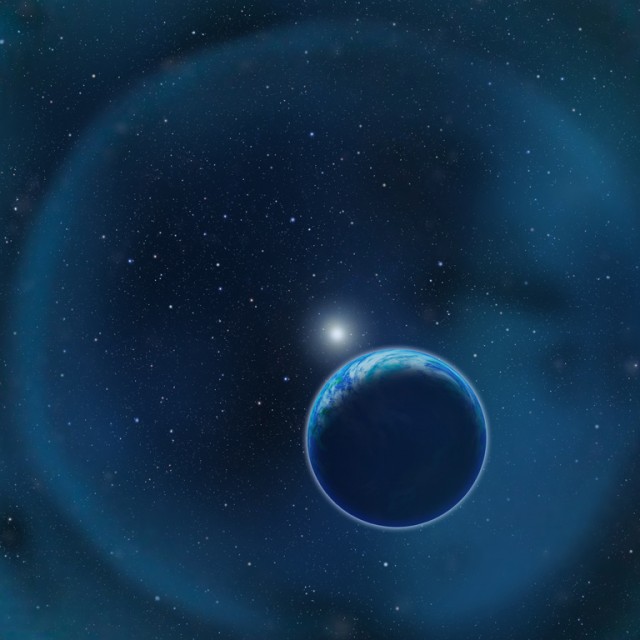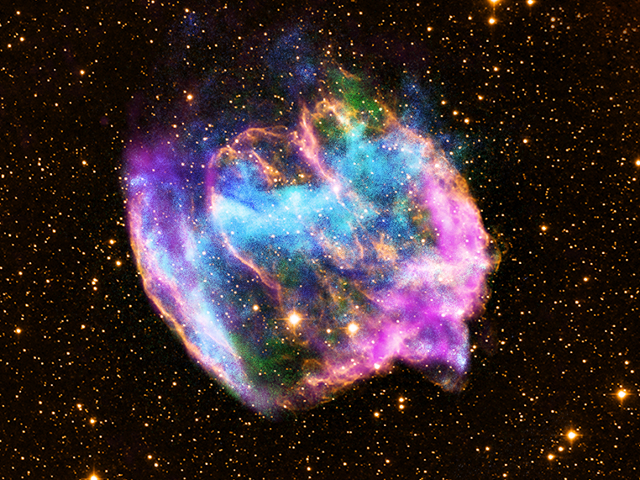'Calvin and Hobbes' comic artist Bill Watterson gives rare interview to Mental Floss - Boing Boing:
Welcome to DJ's Junk Drawer.
I will unofficially update this website on random dates within any random time interval.
Monday, October 21, 2013
Tuesday, April 30, 2013
Monday, March 18, 2013
Death Star was an inside job: a Loose Change parody
Death Star was an inside job: a Loose Change parody:
`
Spocko sez, "Brilliant, and well made parody of the 9/11 video 'Loose Change.'
It points out all the 'coincidences' in the destruction of the Death Star. Was it an inside job?"
Luke's Change: an Inside Job
(Thanks, Spocko!)

`
Spocko sez, "Brilliant, and well made parody of the 9/11 video 'Loose Change.'
It points out all the 'coincidences' in the destruction of the Death Star. Was it an inside job?"
An examination of some questionable events and circumstances leading up to the destruction of the Death Star, through the eyes of an amateur investigative journalist within the Star Wars galaxy. The focus is mainly on the connections between the people who created and operated the Death Star and those responsible for destroying it.
Luke's Change: an Inside Job
(Thanks, Spocko!)
Sunday, March 17, 2013
Thieves Steal Entire Bridge, The Whole Bridge, For Scrap Metal
Thieves Steal Entire Bridge, The Whole Bridge, For Scrap Metal:
The days of casually crossing a creek are over if you live in the Gölçük district of Kocaeli province in western Turkey. Which maybe you don't. But the point is that someone stole a 22-ton, 82-foot-long bridge from there. It's just gone. More »




The days of casually crossing a creek are over if you live in the Gölçük district of Kocaeli province in western Turkey. Which maybe you don't. But the point is that someone stole a 22-ton, 82-foot-long bridge from there. It's just gone. More »
Wednesday, March 6, 2013
Morning star of Saturn: Cassini views Venus
Morning star of Saturn: Cassini views Venus: 
Dawn on Saturn is greeted across the vastness of interplanetary space by the morning star, Venus, in this image from NASA's Cassini spacecraft.
Carolyn Porco, Cassini Imaging Team Leader and director of CICLOPS, writes:


Dawn on Saturn is greeted across the vastness of interplanetary space by the morning star, Venus, in this image from NASA's Cassini spacecraft.
Carolyn Porco, Cassini Imaging Team Leader and director of CICLOPS, writes:
Every so often, our cameras on Cassini digitally record, either intentionally or incidentally, other celestial bodies besides those found around Saturn. The Cassini Imaging Team is releasing a pair of images that did just that. Venus, a lovely shining beacon of light and Earth's `twin' planet, was recently sighted amidst the glories of Saturn and its rings.View the images here.
Along with Mercury, Earth, and Mars, Venus is one of the rocky "terrestrial" planets in the solar system that orbit relatively close to the sun. It has an atmosphere of carbon dioxide that reaches nearly 900 degrees Fahrenheit (500 degrees Celsius), a surface pressure 100 times that of Earth's, and is covered in thick, white sulfuric acid clouds, making it very bright. Despite a thoroughly hellish environment that would melt lead, Venus is considered a twin of our planet because of their similar sizes, masses, rocky compositions and close orbits.
Think about Venus the next time you find yourself reveling in the thriving flora, balmy breezes, and temperate climate of a lovely day on Earth, and remember: you could be somewhere else!
Friday, March 1, 2013
This Lego Fortress of Solitude Should Be a Set
This Lego Fortress of Solitude Should Be a Set:
We all want to be Superman, but sadly can't be—so maybe the nearest we can get is building his pad out of Lego. At least that's what Chris Melby thought when he constructed this sensational model of the Fortress of Solitude from scratch. More »




We all want to be Superman, but sadly can't be—so maybe the nearest we can get is building his pad out of Lego. At least that's what Chris Melby thought when he constructed this sensational model of the Fortress of Solitude from scratch. More »
Looking for life may be easier near dead stars
Looking for life may be easier near dead stars:

When looking for signatures of life outside of the Solar System, we're hampered by a number of problems. Earth is the only place in the Universe where we know life exists, so our current best hope of success lies in looking for Earth-like worlds. However, Earth is a relatively small planet, and it's inherently difficult to locate similarly sized worlds orbiting at ideal distances from their host stars. Even if we find such a planet, we have an additional challenge: determining its atmospheric composition to see if its compatible with life as we know it.
One possible resolution: look for exoplanets orbiting white dwarfs, the remnants of stars like our Sun. The advantages of these systems would be manifold: a white dwarf is much smaller than a star, so if a planet passes between it and us, far more light is blocked. And Avi Loeb and Dan Maoz proposed that at least some signs of life might have survived the deaths of these stars. The light emitted by the white dwarf could highlight any oxygen in the exoplanet's atmosphere, which would be seen as a strong hint of life.
Individual living organisms, or even massive populations like forests and cities, will remain too small to see for the foreseeable future. However, life as we know it leaves chemical evidence. The signatures of some of these chemicals, like chlorophyll (used by plants and some bacteria in photosynthesis), are obvious; others, like methane, can be either biological or non-biological in origin.Read 10 remaining paragraphs | Comments


Artist's impression of an Earthlike planet orbiting around a white dwarf: the remains of a star like our Sun that has shed most of its mass.
One possible resolution: look for exoplanets orbiting white dwarfs, the remnants of stars like our Sun. The advantages of these systems would be manifold: a white dwarf is much smaller than a star, so if a planet passes between it and us, far more light is blocked. And Avi Loeb and Dan Maoz proposed that at least some signs of life might have survived the deaths of these stars. The light emitted by the white dwarf could highlight any oxygen in the exoplanet's atmosphere, which would be seen as a strong hint of life.
Individual living organisms, or even massive populations like forests and cities, will remain too small to see for the foreseeable future. However, life as we know it leaves chemical evidence. The signatures of some of these chemicals, like chlorophyll (used by plants and some bacteria in photosynthesis), are obvious; others, like methane, can be either biological or non-biological in origin.
Thursday, February 28, 2013
What goes around, comes around: U.S. hackers attack China
What goes around, comes around: U.S. hackers attack China:



This Black Hole Spins at (Almost) the Speed of Light
This Black Hole Spins at (Almost) the Speed of Light:
NASA and the ESA have teamed up to measure how fast a black hole, that weighs 2 million times more than our sun, spins—and the result's mind boggling. More »




NASA and the ESA have teamed up to measure how fast a black hole, that weighs 2 million times more than our sun, spins—and the result's mind boggling. More »
Invisible Motion Captured in Video by Scientists
Invisible Motion Captured in Video by Scientists:
When you see people or things, there's literally always more than meets the eye—a person's heart rate and blood flow or slight movements in an object, for example. But most of that is invisible to us! Maybe not for long. A team of MIT scientists have managed to reveal those invisible motions in video. It's fascinating. More »




When you see people or things, there's literally always more than meets the eye—a person's heart rate and blood flow or slight movements in an object, for example. But most of that is invisible to us! Maybe not for long. A team of MIT scientists have managed to reveal those invisible motions in video. It's fascinating. More »
Sunday, February 17, 2013
Strange supernova remnant harbors Milky Way’s youngest black hole
Strange supernova remnant harbors Milky Way’s youngest black hole:

While stars like our Sun go gently into that good night, stars more than 25 times more massive explode in violent supernovae. Since stars that big are rare, their explosions are too, so astronomers typically have to do forensic work on supernova remnants in our galaxy. One particular remnant is one the brightest X- and gamma-ray sources around, marking it as a relatively recent explosion. By studying the remnant, astronomers have determined it likely harbors the youngest black hole in the Milky Way, and the original explosion may have been extremely energetic.
Laura A. Lopez, Enrico Ramirez-Ruiz, Daniel Castro, and Sarah Pearson used long-exposure X-ray observations to study the remnant. They found distinct signs of a supernova with strong jets shooting from the poles. The astronomers failed to find any sign of a neutron star, meaning the supernova must have left a black hole instead. And the emissions suggest it's only 1,000 years of age, which would make the black hole the youngest known in our galaxy.
Over their lifetimes, stars fuse light atoms into slightly heavier ones, but fusing most of the elements in the periodic table requires the intense energies of a supernova. By mapping certain of these elements—iron in particular—in a supernova remnant, astronomers can recreate the conditions under which the star died.Read 9 remaining paragraphs | Comments


Composite X-ray/optical/radio image of the supernova remnant W49B. The structure and composition of this remnant hints that it was a gamma ray burst - one of the most violent explosions known - and likely harbors a black hole at its center.
Laura A. Lopez, Enrico Ramirez-Ruiz, Daniel Castro, and Sarah Pearson used long-exposure X-ray observations to study the remnant. They found distinct signs of a supernova with strong jets shooting from the poles. The astronomers failed to find any sign of a neutron star, meaning the supernova must have left a black hole instead. And the emissions suggest it's only 1,000 years of age, which would make the black hole the youngest known in our galaxy.
Over their lifetimes, stars fuse light atoms into slightly heavier ones, but fusing most of the elements in the periodic table requires the intense energies of a supernova. By mapping certain of these elements—iron in particular—in a supernova remnant, astronomers can recreate the conditions under which the star died.
Friday, February 8, 2013
Automate Everything In Your Home Using Siri and a Raspberry Pi
Automate Everything In Your Home Using Siri and a Raspberry Pi:
We've shared quite a few DIY tips for automating your home, but YouTube user Elvis Impersonator takes it a step further with voice control, controlling everything in his house with the help of Siri and a Raspberry Pi. More »




We've shared quite a few DIY tips for automating your home, but YouTube user Elvis Impersonator takes it a step further with voice control, controlling everything in his house with the help of Siri and a Raspberry Pi. More »
Thursday, February 7, 2013
Ubuntu smartphones set for October launch in two markets
Ubuntu smartphones set for October launch in two markets:
Sure, Ubuntu for smartphones is slated to appear as a downloadable image for the Galaxy Nexus late this month, but you'll have to wait until fall to get your hands on honest-to-goodness Ubuntu phone hardware. According to the Wall Street Journal, Canonical founder Mark Shuttleworth says Ubuntu handsets will hit two "large geographic markets" in October, and that the open source OS has struck the fancy of carriers, to boot. However, Shuttleworth remained coy regarding which regions will see the devices launch in October and which manufacturers will be serving up hardware.
Filed under: Cellphones, Mobile
Comments
Via: CNET
Source: Wall Street Journal
Sure, Ubuntu for smartphones is slated to appear as a downloadable image for the Galaxy Nexus late this month, but you'll have to wait until fall to get your hands on honest-to-goodness Ubuntu phone hardware. According to the Wall Street Journal, Canonical founder Mark Shuttleworth says Ubuntu handsets will hit two "large geographic markets" in October, and that the open source OS has struck the fancy of carriers, to boot. However, Shuttleworth remained coy regarding which regions will see the devices launch in October and which manufacturers will be serving up hardware.
Filed under: Cellphones, Mobile
Comments
Via: CNET
Source: Wall Street Journal
Tuesday, January 29, 2013
How the "Shopping Cart" Patent Almost Ruined Online Shopping—And How Newegg Beat It
How the "Shopping Cart" Patent Almost Ruined Online Shopping—And How Newegg Beat It:
Newegg just took out one of the biggest patent trolls on the web. A troll so pervasive, it threatened to put out a mafioso lawsuit-insurance tax on basically every online retailer on the internet. Here's how it happened, as told in a great writeup over at Ars Technica. More »




Newegg just took out one of the biggest patent trolls on the web. A troll so pervasive, it threatened to put out a mafioso lawsuit-insurance tax on basically every online retailer on the internet. Here's how it happened, as told in a great writeup over at Ars Technica. More »
Subscribe to:
Comments (Atom)











